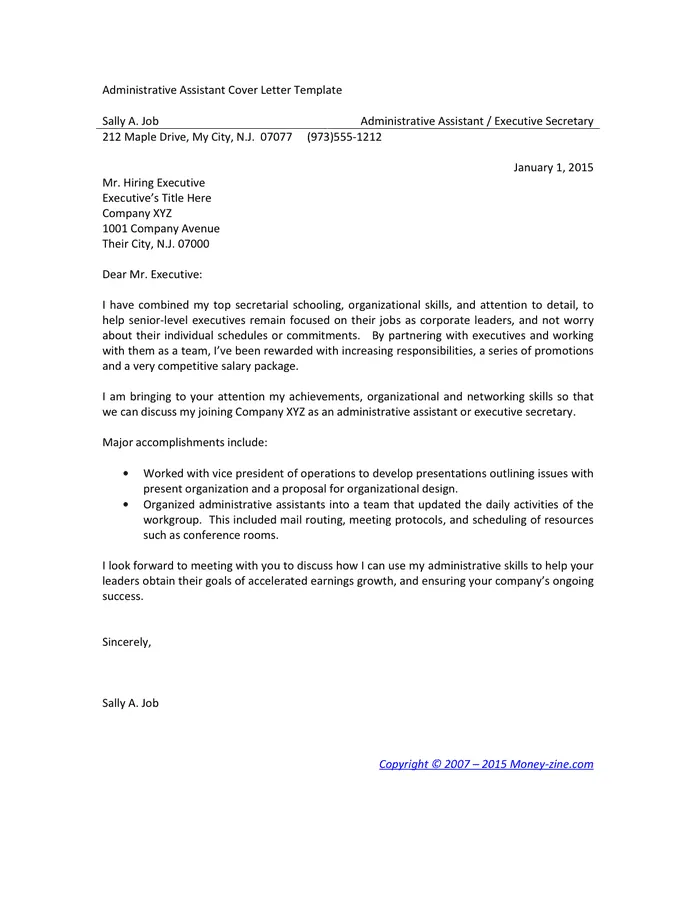Crafting an Admirable Cover Letter
A well-crafted cover letter is a vital component of your application package when seeking an administrative assistant position. It serves as your introduction to the hiring manager, providing an opportunity to showcase your personality, skills, and experience beyond what’s listed in your resume. This guide will walk you through the essential elements of creating a cover letter that grabs attention and increases your chances of landing an interview. It is not just a formality; it’s your first chance to impress.
Understanding the Importance of a Cover Letter
The cover letter allows you to personalize your application and demonstrate your genuine interest in the specific role and company. It gives you the space to explain why you’re the perfect fit, connecting your skills and experience to the job requirements. In a competitive job market, a strong cover letter can set you apart from other candidates, making you more memorable to the hiring team.
Highlighting Your Skills and Experience
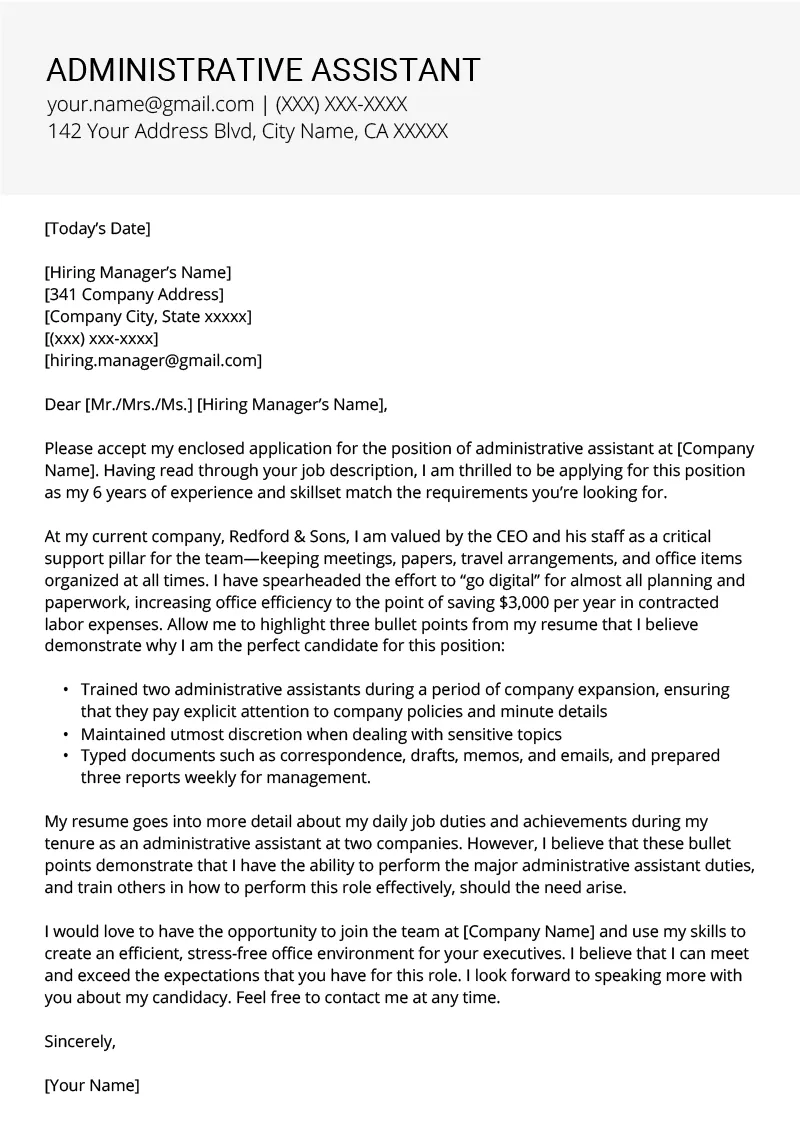
Administrative assistant roles demand a diverse skill set. Your cover letter is where you highlight the skills most relevant to the position you’re applying for. This section should focus on what you bring to the table and how your past experiences align with the job’s needs. Focus on the requirements mentioned in the job posting.
Essential Skills for Administrative Assistants
Administrative assistants must possess a variety of skills, including excellent communication, both written and verbal, strong organizational skills, proficiency in office software (like Microsoft Office Suite or Google Workspace), time management capabilities, and the ability to multitask effectively. Attention to detail, a professional demeanor, and problem-solving abilities are also highly valued. Adaptability and a willingness to learn new technologies are also crucial.
Showcasing Relevant Experience
When describing your experience, provide concrete examples of your accomplishments. Instead of simply listing your duties, use the STAR method (Situation, Task, Action, Result) to show how you’ve successfully handled tasks in previous roles. This method allows you to provide specific examples that demonstrate your capabilities. For instance, describe how you improved office efficiency or streamlined a specific process. Use action verbs to create a dynamic impression of your skills.
Formatting Your Cover Letter
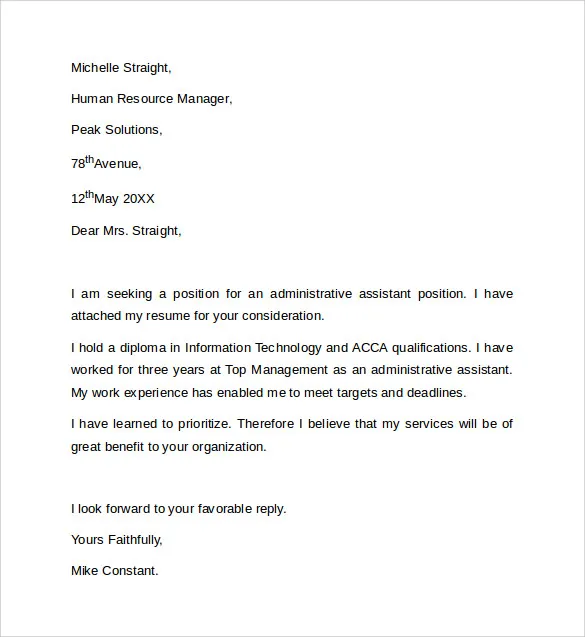
The formatting of your cover letter is just as critical as its content. A well-formatted letter is easy to read and reflects your professionalism. Avoid dense blocks of text, and use clear headings and bullet points when appropriate. Maintain a consistent font throughout the document and use a professional-looking font such as Times New Roman, Arial, or Calibri. Ensure proper spacing and margins for readability.
Contact Information and Date
Start with your contact information, including your name, phone number, email address, and optionally, your LinkedIn profile URL. Place this information at the top of the letter. Below your contact details, add the date. Then, include the hiring manager’s name, title, and the company’s address, if you know it. If the hiring manager is unknown, use a general salutation like ‘Dear Hiring Manager’.
Proper Salutation
Use a formal salutation such as ‘Dear Mr./Ms./Mx. [Last Name]’ if you know the hiring manager’s name. If you don’t know the name, ‘Dear Hiring Manager’ or ‘Dear [Company Name] Team’ are acceptable alternatives. Always address the letter to a specific person if possible; research the company website or LinkedIn to find the hiring manager’s name.
Writing the Body of Your Letter
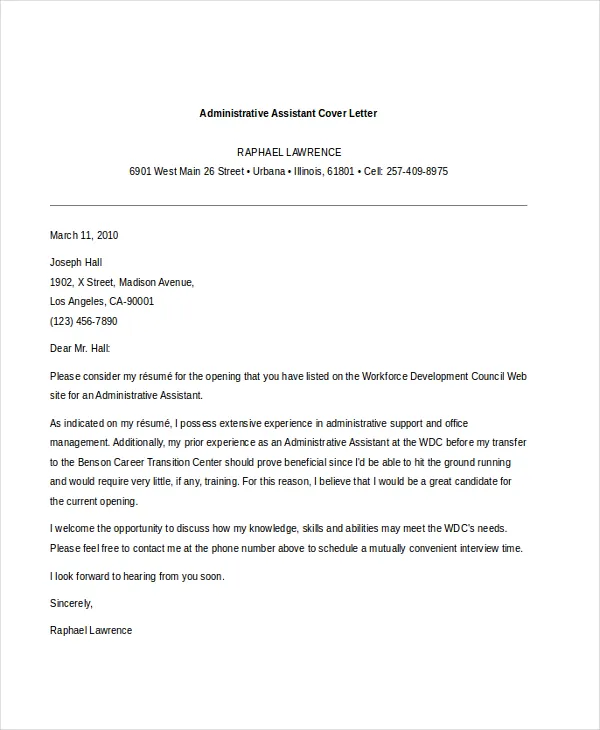
The body of your cover letter is where you elaborate on your skills and experience. This section should be divided into paragraphs to ensure clarity and flow. The body generally includes an opening, middle, and closing paragraph, each serving a distinct purpose in presenting your qualifications and interest.
Opening Paragraph
The opening paragraph is your first opportunity to capture the reader’s attention. State the position you are applying for and where you saw the job posting. Briefly mention why you are interested in the role and the company. This paragraph should clearly state your intention and provide a concise overview of your key qualifications. Express enthusiasm and highlight a key skill relevant to the role.
Middle Paragraphs
The middle paragraphs are where you delve deeper into your skills and experience. Use these paragraphs to connect your qualifications to the job requirements. Provide specific examples of your accomplishments using the STAR method (Situation, Task, Action, Result). Highlight relevant skills, such as communication, organization, and proficiency in office software. Tailor your examples to the specific job description, emphasizing the most important requirements.
Closing Paragraph
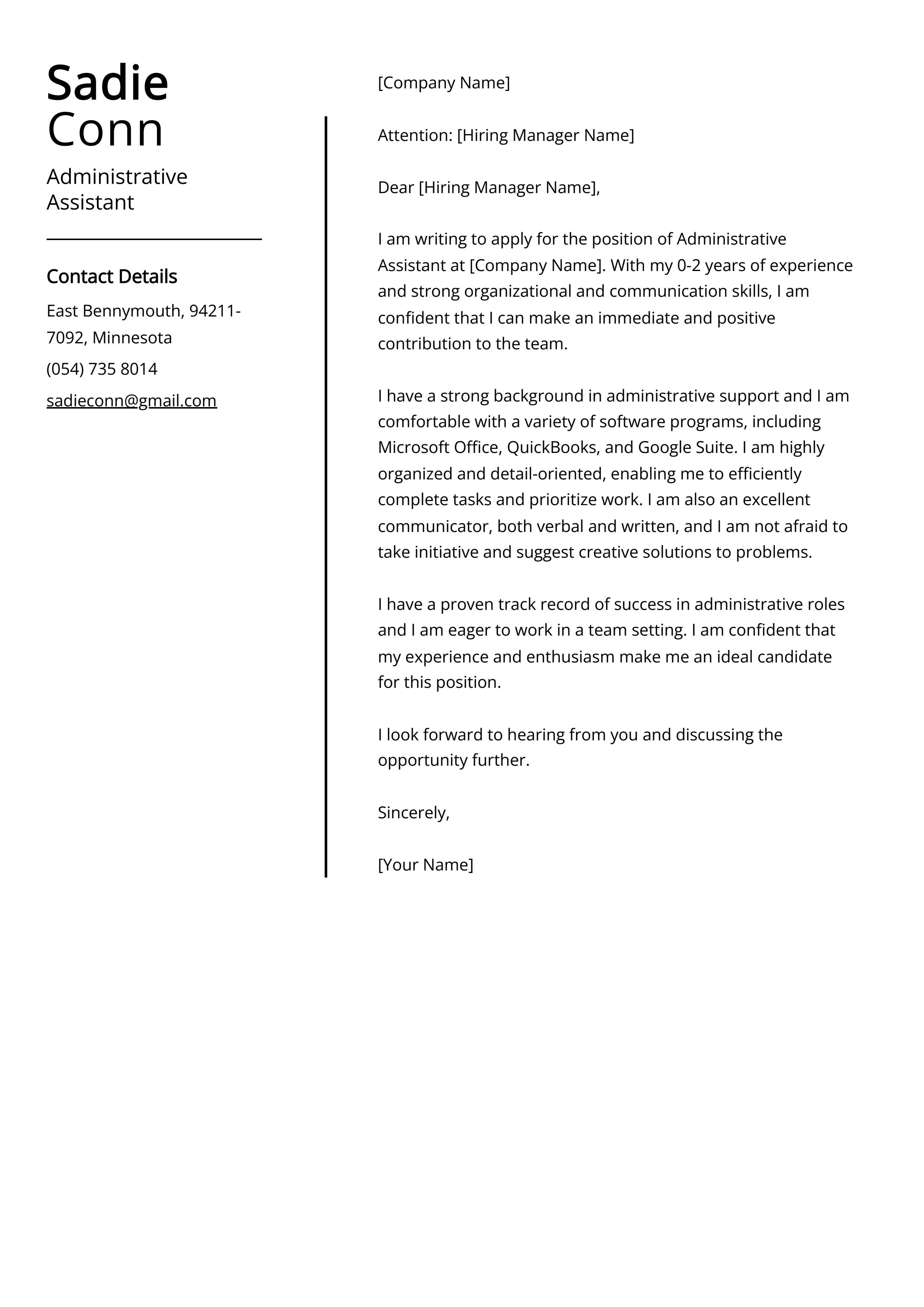
In the closing paragraph, reiterate your interest in the position and the company. Express your enthusiasm for the opportunity and thank the hiring manager for their time and consideration. Include a call to action, such as stating your availability for an interview and providing your contact information again. Keep the tone positive and confident.
Closing and Signature
End your letter with a professional closing such as ‘Sincerely,’ or ‘Best regards.’ Leave space for your signature, and then type your full name. If you are sending an electronic cover letter, you can type your name and include your signature as an image if you have one.
Key Elements of a Compelling Cover Letter
A strong cover letter clearly conveys your qualifications, expresses your enthusiasm for the role, and demonstrates your understanding of the company’s needs. Ensure your letter is well-written, free of errors, and tailored to each specific job application. By focusing on these key elements, you will greatly increase your chances of being selected for an interview.
Tailoring Your Cover Letter
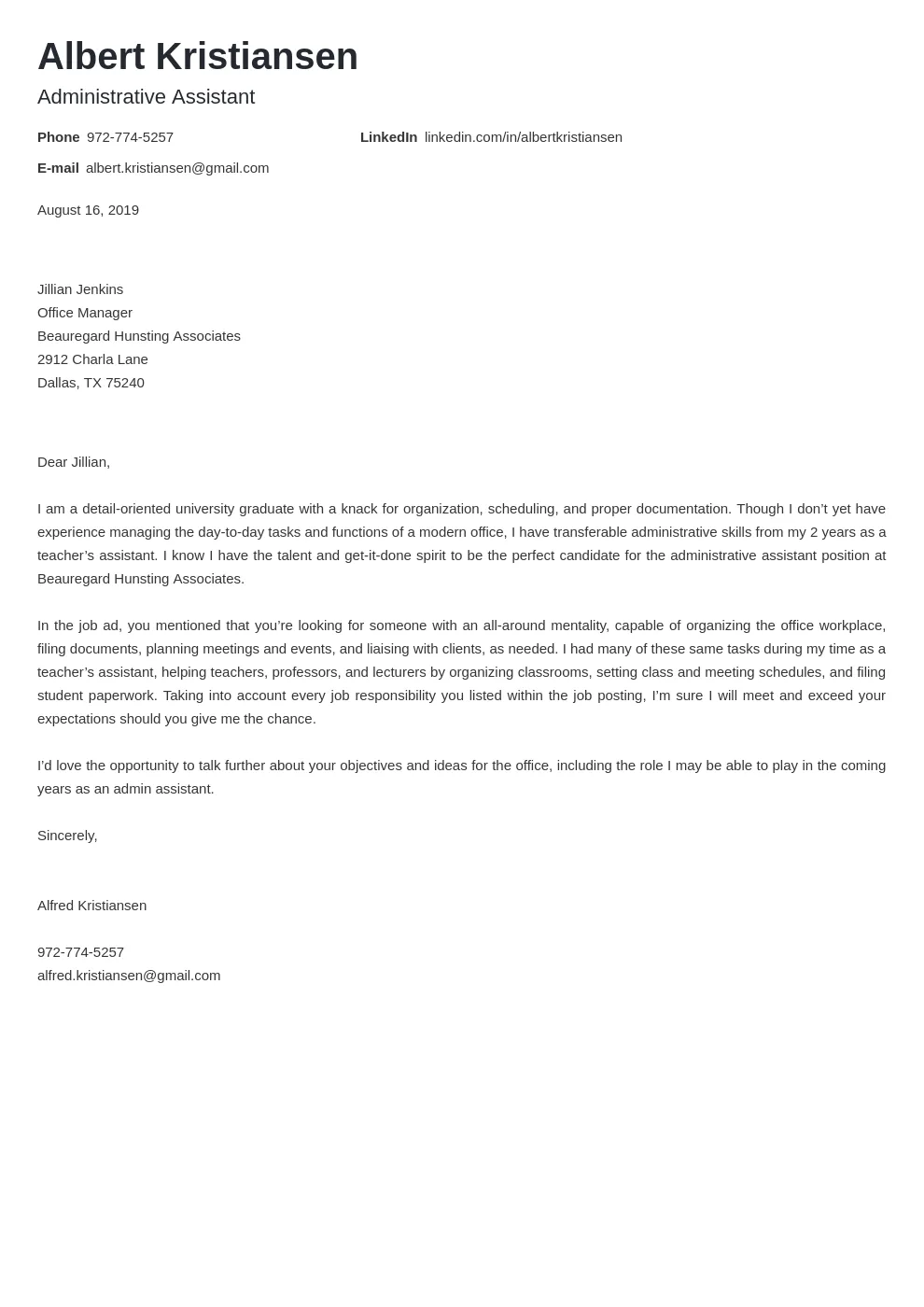
Always customize your cover letter for each job application. Generic cover letters often fail to impress hiring managers. Review the job description carefully and identify the key skills and qualifications the employer is seeking. Then, use your cover letter to demonstrate how your skills and experiences align with those requirements. Research the company and tailor your letter to reflect your understanding of its values and goals.
Quantifying Your Achievements
Whenever possible, quantify your accomplishments. Use numbers and data to demonstrate your impact in previous roles. For example, instead of saying “Improved office efficiency,” say “Improved office efficiency by 15% by implementing a new filing system.” Quantifiable achievements provide concrete evidence of your skills and make your cover letter more impactful.
Proofreading and Editing
Proofread your cover letter carefully for any grammatical errors, spelling mistakes, or typos. Errors can undermine your credibility and professionalism. Read your letter aloud to catch any awkward phrasing or inconsistencies. Ask a friend or family member to review your cover letter as a fresh set of eyes can often spot mistakes you might miss.
Cover Letter Examples
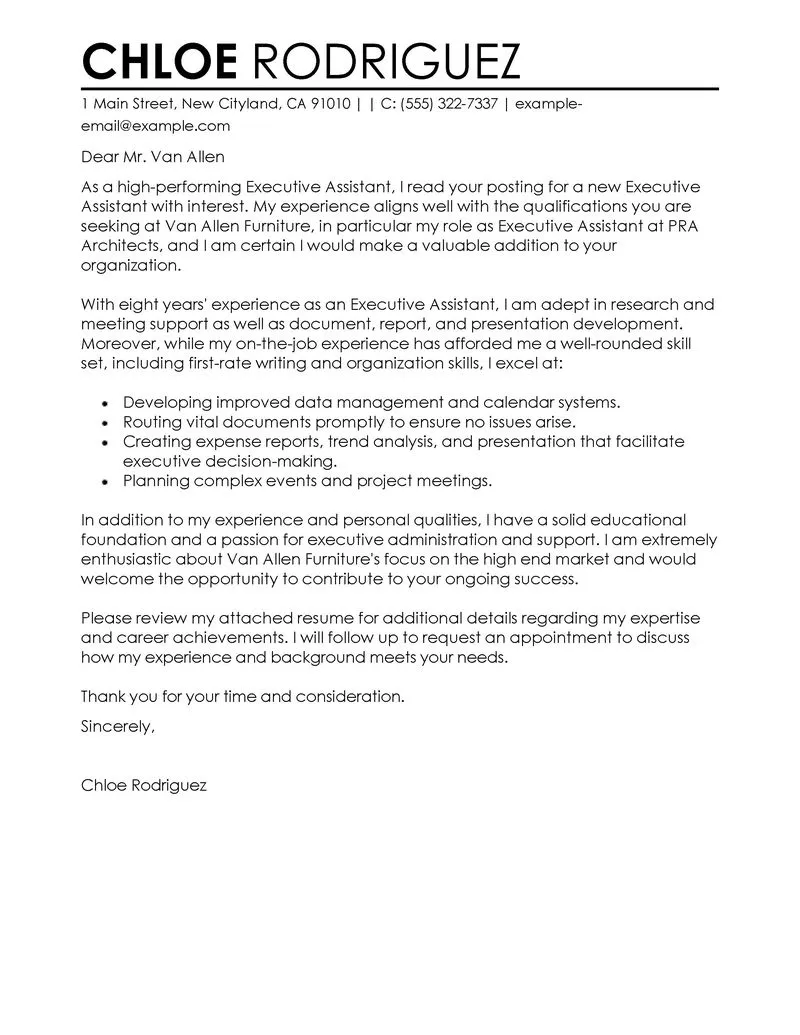
Reviewing cover letter examples can provide valuable insight into how to structure your own. Here are examples tailored for different levels of administrative assistant roles to help you get started.
Example 1 Entry-Level Administrative Assistant
This example is designed for candidates with limited work experience, emphasizing transferable skills and academic achievements. The focus is on showing eagerness to learn and a strong work ethic. Highlight any internships or volunteer experiences, focusing on the skills gained and responsibilities handled. Show adaptability and eagerness to work.
Example 2 Experienced Administrative Assistant
This example should demonstrate a strong track record of administrative success. It should focus on specific accomplishments and quantifiable results. Highlight experience in managing office operations, handling complex scheduling, and supporting executive-level staff. Showcase leadership skills, problem-solving abilities, and technical proficiency.
Example 3 Administrative Assistant with Specialization
This example is for administrative assistants with specific industry or skill-based specializations (e.g., legal, medical, or executive assistant roles). Tailor your cover letter to the specific industry and emphasize the specialized skills and experience relevant to that field. Demonstrate a deep understanding of the industry’s needs and requirements.
Final Thoughts
Writing a compelling cover letter for an administrative assistant position is crucial for making a positive impression and securing an interview. By highlighting your skills, tailoring your letter to each job application, and presenting yourself professionally, you can significantly increase your chances of landing your dream job. Remember to always proofread and customize each letter to match the specific requirements of the role. Good luck!
Key Takeaways
- Always tailor your cover letter to each job application.
- Highlight relevant skills and quantify your achievements.
- Format your cover letter professionally and proofread carefully.
- Express enthusiasm for the position and the company.
- Use the STAR method to showcase your experience.
